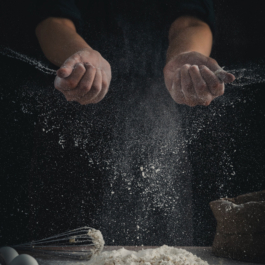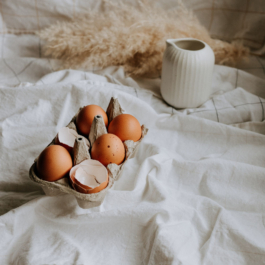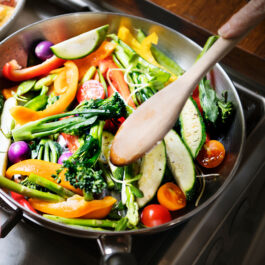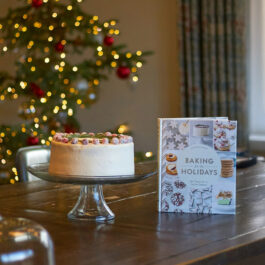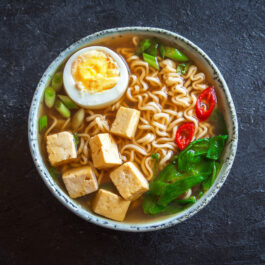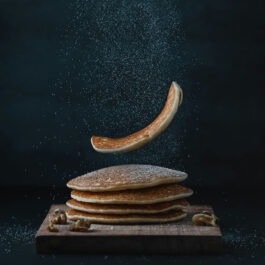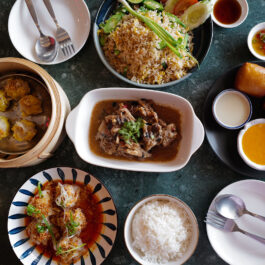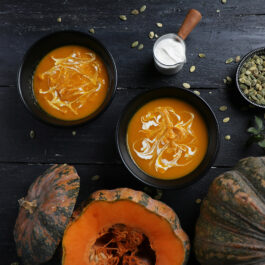Food & Drink
Asking For A Friend: Common Cooking Mistakes (And How To Fix Them)
Slide Nr 1Whether your plans for the new year involve becoming a Michelin-starred chef or just ditching the microwave for most meals, cooking takes practise, and practise makes plenty of room for error – we know, we’ve all been there. From over-spicing to undercooking and everything in between, a small mistake in the kitchen can lead to a big disaster at the table. But before the delivery guy comes to save the day, learn how to easily fix these common cooking slip-ups, and how to prevent them in the future.
0/10
Food & Drink
Asking For A Friend: Common Cooking Mistakes (And How To Fix Them).
Slide Nr 2Oversalted Dish – Whether it’s table, kosher, Himalayan, sea or black, salt is essential for making all the flavours of a dish stand out – unless you overdo it. And while it’s always better to under-season or salt little by little to prevent this from happening, there are foolproof ways to recover when the salt lid accidentally pops off over your pan (at least, that’s what you’re telling the guests…). For liquids like soups, stews or sauces, dilution is the way to go: simply add water or some other unsalted liquid into the pot to help thin the salt concentration. For solid foods, adding a squeeze of an acidic ingredient like lemon juice or vinegar will help mask the salt. Another alternative is to add a starch into the mix: foods like pasta, rice or quinoa absorb a lot of salt and will help balance the flavours out. Bonus tip: If you’ve accidentally sprinkled too much hot spice, add nuts, dairy or honey to neutralise the burn.
1/10
Food & Drink
Asking For A Friend: Common Cooking Mistakes (And How To Fix Them).
Slide Nr 3Dry Meat Or Poultry – One of the common causes for dry meat or poultry is cutting into it right after it’s cooked. If you start carving the second you take your roast out of the oven or your steak off the grill, the proteins in the meat won’t have time to coagulate or the juices to redistribute, leaving your cutting board soaked – and your meal dry and tough. Always let meat rest for a few minutes after removing from heat (chefs recommend one minute per 100 grams of meat), covering loosely with foil to keep it warm. Not only will this keep your cut juicy and tender, but it’ll also make it easier to carve.
2/10
Food & Drink
Asking For A Friend: Common Cooking Mistakes (And How To Fix Them).
Slide Nr 4Wilted Leafy Greens – Time passes a little too quickly when you have fresh produce in your fridge, and what once was a bunch of beautiful, crisp leaves is now looking sad and mushy. Before surrendering them to your compost bin, try reviving what can be saved: from celery, asparagus and broccoli stalks to lettuce, arugula and spinach leaves, you may be able to perk them up with an ice bath. Place the leaves and stalks in a bowl of ice water, and keep it in the fridge for 30-60 minutes. Pat dry or whir in a salad spinner, and your greens will look fresh from the field. To prevent wilting from happening in the first place, rinse your greens as soon as you get home, dry them thoroughly and store them wrapped in paper towels in resealable bags to reduce any remaining moisture.
3/10
Food & Drink
Asking For A Friend: Common Cooking Mistakes (And How To Fix Them).
Slide Nr 5Lumpy Sauces And Gravies – If we’re talking about banana bread or mashed potatoes, lumps are there for a reason. In the case of sauces and gravies, not so much. Luckily, there’s nothing a simple whisk, blend or sieve can’t easily fix. If you want to prevent a lumpy nightmare from happening in the first place, make sure to sift the flour or cornstarch before adding it (a bit at a time, and while thoroughly whisking) to the liquid mixture. Alternatively, mix your thickener with water to make a smooth slurry before adding it to the pot.
4/10
Food & Drink
Asking For A Friend: Common Cooking Mistakes (And How To Fix Them).
Slide Nr 6Food Sticking To The Pan – Before blaming your cookware, consider this: it might be you. Assuming your pan isn’t scratched, dirty or burnt, food can stick for three main reasons: not enough heat, time or fat. You’ll always need to preheat your pan over medium heat before adding food to it, since placing food in a cold pan will more likely make it stick. Check to be sure it’s hot enough following this simple water trick. Regarding time, before moving or flipping the food, see if it has formed a crust or caramelisation. If you feel a bit of resistance when attempting to flip it, it probably needs more time. For the fat, even if your pans are non-stick, you’ll need lubricant to prevent sticking – and let’s face it, a thin layer of oil or butter gives food a special flavour.
5/10
Food & Drink
Asking For A Friend: Common Cooking Mistakes (And How To Fix Them).
Slide Nr 7Mushy Pasta – As simple as it is to cook pasta, over-cooking is one of the most common mistakes in the kitchen, Italian kitchens included. A few seconds over the right cooking time, and you’re left with sticky, clumpy noodles that not even your little mac ‘n’ cheese lovers would want to eat. If it’s too late, you can either rinse your overcooked pasta with ice-cold water for a few seconds to remove its gooey texture, or put the pasta in a pan with hot olive oil and stir for five minutes until it looks firm again. Next time, avoid the gloppy texture by using a large pot so that each piece has time to cook individually. Also, stir the pasta right after adding it to the water, and then a few more times while it cooks. But most importantly, remove it from heat one or two minutes before the suggested time for that perfect al dente result.
6/10
Food & Drink
Asking For A Friend: Common Cooking Mistakes (And How To Fix Them).
Slide Nr 8Flat Meringue – If you feel like mixing meringue is taking forever, you’re probably making one of the two most common mistakes: the egg whites were not at room temperature, or you added the sugar too quickly. First, take your eggs out of the fridge at least 30 minutes before using them to make sure they’ll be airy enough for whisking (if you forget, submerge in warm water to bring them to room temperature). When adding the sugar, do it one tablespoon at a time, allowing enough time to whisk it completely between spoonfuls – if you add the sugar all at once, it’ll knock all the air out and make it hard for the meringue to rise. In case of emergency, fix a runny mixture by adding an extra whipped egg white with a tablespoon of cornstarch to stiffen it up.
7/10
Food & Drink
Asking For A Friend: Common Cooking Mistakes (And How To Fix Them).
Slide Nr 9Overcooked Eggs – Yes, the most basic, universal breakfast of all can go wrong. If cooked too long, scrambled eggs can become dry and tough, and boiled eggs can take on a weird grey colour and a chalky texture. Always remember that eggs continue to cook even after they’ve been removed from the heat, so just before your scrambled eggs look done, turn off the heat and plate them up. For poached and boiled eggs, run them under/submerge them in cold water to stop the cooking process and keep them fresh.
8/10
Food & Drink
Asking For A Friend: Common Cooking Mistakes (And How To Fix Them).
Slide Nr 10Cake Sunk In The Middle – Baking is a science, and one tiny error could result in chaos. Case in point: a cake deflating right after rising. This could happen for multiple reasons. If you use a different pan size than the one suggested in the recipe, your cake layers might be thicker or thinner, resulting in uneven baking. It might also have to do with the oven being too hot or not hot enough, the oven door being opened too soon, the butter being too soft, the batter being over mixed – the list goes on. For a quick fix, pop the cake back in the oven to make sure any undercooked section is fully cooked, level the cake layer, cutting away any excess, or, if all else fails, decorate with extra frosting to hide uneven heights. No one will suspect.
9/10
Food & Drink
Asking For A Friend: Common Cooking Mistakes (And How To Fix Them).
Slide Nr 11Not Knowing Your Oven – You have all the ingredients, you’ve strictly followed the recipe, and you’re doing everything right. And yet, the result wasn’t what you expected. In many cases, it might have something to do with your oven’s quirks, calibration and temperature fluctuations, and this might result in foods cooking too fast, too slow or unevenly. Get to know your oven: does it have hot spots? Are the racks placed at the right levels? How long does it take to preheat? Do you need an additional oven thermometer? When you understand your oven, you can learn when to rotate your pans from front to back or from top to bottom, how to fix uneven temperatures, or when (and when not) to peek inside – and you’ll already be halfway to your perfect recipe.
10/10


